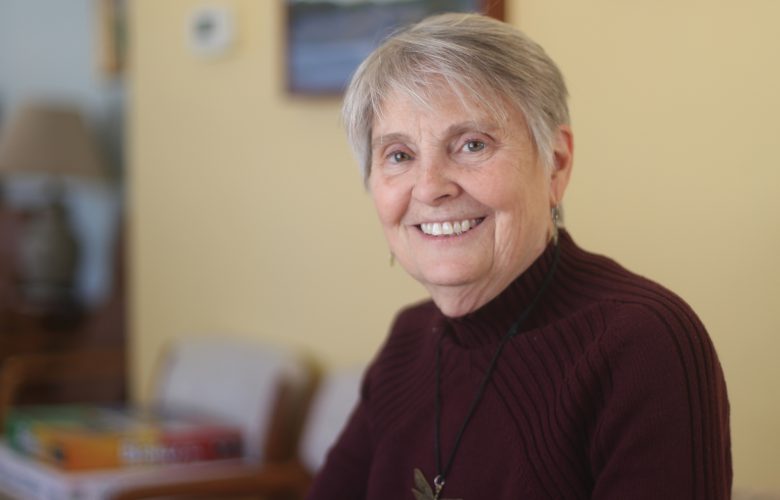A journalist’s view
By Aubrey Ann Parker
Current Contributor
Editor’s Note: Typically, this publication’s pages are filled with what we consider to be (mostly) uplifting feature stories about the interesting people, places, and events of Benzie County. This issue, however, we felt it necessary to depart from our warm-and-fuzzy fare to take a preliminary dive into first-hand accounts of mental illness, loss, and neurodiversity. We understand and empathize with community members who have experienced/are experiencing issues like those profiled in this issue’s pages, and for any readers who wish to share their experiences, we encourage you to email editor@betsiecurrent.com—it could be just to share with a journalist team who will listen, or it could be that you are hoping to get your story out in the world. Either way, we hope that this issue begins to shine a light for our community on topics that are too often left in the darkness.
I grew up with a mother who worked in community mental health. Obviously she was not allowed to reveal any stories about her patients, but she was able to infer some insight into the inner workings of these kinds of government departments, most of it indirectly.
These offices are filled with people who really care—nurses, doctors, social workers. But the sad thing is that, over the course of 20 years, the majority of my life, I watched as her department was stripped of these good people, either by bureaucracy or funding cuts (or, more often, some hybrid of both).
Having spent the past decade of my adult life working as a journalist, I was caught unaware by the long-known (and unspoken) rule of not reporting on suicides. (And when I polled a good number of my colleagues, they were unaware of this, too.)
I did a bit of research, and suicide is generally something that is reported only if it is a celebrity or a murder-suicide—this is true nationally and at the local levels, as well. The reasoning is to prevent what I am going to call “copy-cat suicide,” though that is not the official term. In other words, people who may be thinking about it and then actually go through with it because of someone they know or something they have read.
I admit, that in itself is a good reason not to publish about suicides. And apparently there are collective rules in journalism that are to be followed about what to say and what not to say if you are going to actually report it, with the idea being to minimize this copy-cat effect—you are not going to say things that you generally are able to with other kinds of deaths.
For instance, one of the recommendations via a 1994 report from the Centers for Disease Control (CDC) is: “News coverage is less likely to contribute to suicide contagion when reports of community expressions of grief (e.g. public eulogies, flying flags at half-mast, and erecting permanent public memorials) are minimized. Such actions may contribute to suicide contagion by suggesting to susceptible persons that society is honoring the suicidal behavior of the deceased person, rather than mourning the person’s death.”
Okay, that makes sense.
Also this: “Empathy for family and friends often leads to a focus on reporting the positive aspects of a suicide completer’s life. For example, friends or teachers may be quoted as saying the deceased person ‘was a great kid’ or ‘had a bright future,’ and they avoid mentioning the troubles and problems that the deceased person experienced. As a result, statements venerating the deceased person are often reported in the news. However, if the suicide completer’s problems are not acknowledged in the presence of these laudatory statements, suicidal behavior may appear attractive to other at-risk persons—especially those who rarely receive positive reinforcement for desirable behaviors.”
Again, these suggestions seem to make sense as to why journalists do not report suicides at all, or why we do very carefully, if we do.
However, the world is changing.
It used to be that people got all their news from the newspaper or the radio or the television. But now, people are getting news via the internet—and even faster than general web pages are social media platforms, like Facebook, Twitter, Instagram, and SnapChat.
Multiple times over the past decade, I have found out on Facebook that a childhood friend has died by suicide. Not even 24 hours later, people were already posting. And many of them, in their grief, were posting as if it were any other kind of death. Saying things that would fall into the above categories of “public community expressions of grief” or “statements venerating the deceased person… without acknowledging problems.” Things like, “She’s in a better place now,” or “His struggles are over.” This is problematic, because potentially suicidal people might read this and be encouraged by it to attempt suicide themselves.
I am not *at all* saying that we need to censor these posters’ grief. What I am saying is that we need to learn to talk about suicide collectively—and we need our journalists to lead the way. To come out of the shadows of not reporting on suicide and mental health itself, not to mention the ways in which major funding cuts and bureaucracy are gutting the very programs and professionals who are trained to help at-risk persons.
I truly believe that education and open communication are the means to a more just world, and this mindset works in this scenario, too.
For instance, did you know that suicide now claims more U.S. lives than car accidents? Did you know that U.S. suicide rates for the general public have not changed much since the 1960s? Did you know that men are three to four times more likely to die by suicide than women? Did you know that veterans are twice as likely as civilians? Did you know that in 2009 and 2010, more U.S. soldiers killed themselves than died in combat? Did you know that attempted suicide rates for U.S. LGBTQ youth and adults are three times higher than national averages?
Further reading:
“… I wonder if, in our attempt to protect those at higher risk of suicide, we do a disservice to the wider community in making it seem that suicides are not common… The media, for better or worse, are the glasses through which we understand what happens around us and what it means. If we continue to pretend suicides don’t happen as frequently as they do, then how can we blame governments for underfunding research and services for people with mental illness? Worse, the stigma will live on and be reinforced… We keep things on the hush-hush when we’re embarrassed about them. Mental illness should not be one of those things.” —It’s Time the Media Starts Reporting Suicides
“If done responsibly, media reports on suicide can help to remove the stigma of depression, lead people to vital mental health resources, and, perhaps, save lives.” —Reporting Suicide and Finding A Balance
If you or someone you know needs help, call the U.S. National Suicide Prevention Lifeline at 1-800-273-TALK (8255), a free 24/7 service that can provide suicidal persons or those around them with support, information, and local resources. A local option in Northern Michigan is Third Level Crisis Center, which, among other resources, has a 24-hour hotline number at 231-922-4800 or 800-442-7315—they also respond to text messages at 231-480-0292, Monday through Friday, between 4 p.m. and 8 p.m., excluding holidays.
Featured Photo Caption: Events that are fun, upbeat, somber, cathartic, healing, purposeful, and supportive all at the same time do not happen everywhere, but they do happen in Benzie County. Back in August 2015, hundreds of people showed up at St. Ambrose Cellars to the Isaac Julian Legacy Foundation Benefit Concert, which raised funds to create a peer-to-peer teen-suicide prevention program. Photo by Aubrey Ann Parker.
SIDEBAR
Need Help?
We in Benzie County have lost many people—teens and adults—to suicide over the past decade. In trying to search for an actual number, we at The Betsie Current flat out could not find one, because most of the time, suicides are not reported by the media.
Given that it was recently national Suicide Prevention Week (Sunday, September 5 – Saturday, September 11, 2021), we figured that now would be a good time to share a few stats:
• Suicide is the 2nd leading cause of death for youths, ages 10-24: 81 percent are males. (Center for Disease Control)
• More teenagers and young adults die from suicide than from AIDS, birth defects, cancer, chronic lung disease, heart disease, influenza, pneumonia, and stroke combined. (The Jason Foundation)
• Four out of five teens who attempt suicide have given clear warning signs. (The Jason Foundation)
• Suicide claims more U.S. lives than car accidents. (Live Science)
• Suicide rates for the general public have not changed much since the 1960s. (OECD)
• Men are about three to four times more likely to die by suicide than women. (American Foundation for Suicide Prevention)
• Veterans (older veterans especially) are twice as likely as civilians. (Task and Purpose)
• In 2009 and 2010, more active-duty U.S. soldiers killed themselves than died in combat. (Huffington Post)
• Attempted suicide rates for U.S. LGBTQ youth and adults are three times higher than national averages. (Western Herald)
Many times, people are too scared to bring up suicide in conversation. Again, it goes back to this belief that ‘talking about suicide may give someone the idea.’ But in everything that we, the editors, have read, if someone is already unhappy or depressed, allowing that person to discuss her/his feelings openly is one of the most helpful things we can do.
“Even if they have had suicidal thoughts, giving them permission to express those thoughts can relieve some of the anxiety and provide an avenue to recognize other ways to escape their pain and sadness,” states The Jason Foundation.
The Northern Express Weekly had a good article back in August 2015 on suicide prevention in our area, and you can read that at http://bit.ly/1LhRH73 online. One of the biggest take-aways is this:
“People who work in suicide counseling say the biggest factor contributing to someone’s life or death is whether that person is able to overcome the stigma associated with mental illness and ask for help.”
If you happen to find yourself being asked for help, treat the situation like you would with any other health concern—there are professionals who are trained to give assistance and support. You could offer to help the person take steps to get assistance and support. For example, you could help to research treatment options or offer to go with the person to an appointment. This contributes to removing the stigma that is associated with asking for help. The hotlines listed above are great resources for you, as well, not just for people who are thinking about suicide; they can help you with idea of how best to help your friend.




